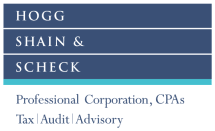Accounting Implications of Default and Termination of Leases
The topic of accounting for leases is a wide and potentially complicated field. One of the reasons is the fact that no two leases are alike. Each lease is the product of negotiation between the lessor, who generally owns the property, and the lessee, who is generally looking to rent the property. Therefore, each lease contract will contain a unique set of conditions, terms and clauses to which the two parties have agreed upon. In order to properly account for a lease, it becomes necessary for the person doing the accounting to take into consideration all applicable clauses, conditions and terms contained in this agreement.
This is just as true for those portions of the lease contract that relate to termination and default of a lease. When it comes to accounting for these types of contingencies, there are a number of issues to consider and keep in mind. As an Ontario business owner, seeking the assistance of a reputable accounting firm such as Hogg, Shain & Scheck will help you understand these implications and properly account for them.
Is the agreement an operating lease or a capital lease?
The first step to determine is whether or not the lease falls under the definition of an operating lease or a capital lease. There are standard characteristics to look for, in order to identify one from the other. In a nutshell, an operating lease works similar to a rental arrangement, while a capital lease is more akin to a purchase via amortization.
What kinds of fees are incurred in order to terminate the lease?
In the example of an early termination of an operating lease, there are some points that the lessee must
consider, and which will require revisiting the provisions of the lease contract. Does the lessee end up having to pay for certain fees, costs or charges in order to wind down the lease agreement ahead of the original schedule? If the answer is yes, these costs, fees and charges will have to be recorded by the lessee as liabilities in its books, and these amounts will be recorded based on their fair value.
In addition, it will have to be determined whether the lessee will end up incurring additional expenses, fees or charges over the remaining portion of the original period of time for the lease, even if the lessee no longer gains any benefit from the property. The lessee may no longer be receiving benefits because it either no longer has possession of the property, or is no longer able to make use of it. In this situation, the lessee must record these costs in its books, again using their fair value. However, the applicable amount for the fair value is determined by taking the sum of the rental payments which would have still been payable by the lessee under the agreement, then subtracting from that amount any rental payments already submitted in advance, and then subtracting the amounts which could be reasonably expected to be collected in the event that the property were to be subleased.
These examples are only a very small portion of the possible accounting implications of lease terminations and defaults. There is much more that this topic covers. In effect, this discussion serves to emphasize just how important it is to have reliable accountants with the necessary experience and expertise at your side in order to untangle and simplify your firm’s accounting obligations when it comes to the termination or default of a lease. Call us at Hogg, Shain & Scheck today to schedule an appointment.






